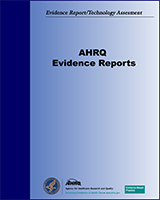NCBI Bookshelf. A service of the National Library of Medicine, National Institutes of Health.
This publication is provided for historical reference only and the information may be out of date.
Structured Abstract
Context:
Despite an extensive literature documenting multiple benefits of the autopsy, only approximately 5% of deaths nationally undergo autopsy. Many of the autopsy's benefits—relating to medical education, characterization of new diseases, and advancing the understanding of disease pathogenesis—are difficult to quantify and thus less likely to change the attitudes, reimbursement mechanisms, and other factors that have produced this dramatic decline in autopsy performance. This report, therefore, focuses on more quantifiable benefits—to individual clinicians, institutions, and the healthcare system as a whole. Specifically, the report reviews the literature addressing the extent to which the autopsy reveals important errors in clinical diagnosis and the roles these data have in measuring and improving clinical performance.
Methods:
We conducted an extensive search of the MEDLINE® database, supplemented by hand searches of article bibliographies and consultation with experts in the field. Included studies were required to have well-defined patient samples, clinical diagnoses derived from autopsy request forms or chart review (rather than death certificates), and identification of diagnostic errors using well-defined classification schemes.
Main Results:
Multiple regression analysis incorporating study period, autopsy rate, country (U.S. vs. non-U.S.) and case mix as predictors showed that diagnostic errors that may have affected patient outcome (“Class I errors”) are detected in 10.2% (95% CI: 6.7–15.3%) of autopsies performed in the base time (1980) and country (U.S.), and with the reference case mix (general autopsies) and mean autopsy rate. The prevalence of other “major errors” related to the principal diagnosis or underlying cause of death was 25.2% (95% CI: 20.8–31.2%). When changes in autopsy rates are taken into account, these error rates showed modest decreases with time. Specifically, Class I errors exhibited a relative decrease of 26.2% per decade (p=0.10), and major errors decreased at a rate of 28.0% per decade (p=0.006). Nonetheless, Class I errors still occur in 3.8–7.9% of cases and major errors in 8.0–22.8%, with these ranges reflecting the impact of variations in autopsy rates. Studies specifically addressing the issue of clinical selection indicate that clinicians cannot reliably predict which autopsies will be of high diagnostic yield. No intervention study has directly addressed the impact of autopsy findings on clinical practice or performance improvement. However, the existing evidence strongly suggests substantial inaccuracies in death certificates and hospital discharge data, both of which play important roles in epidemiologic research and healthcare policy decisions.
Conclusions:
At the level of the individual clinician, the chance that autopsy will reveal important unsuspected diagnoses in a given case remains significant. Moreover, clinicians do not seem able to predict the cases in which such findings are likely to occur. There is no evidence to determine whether findings from autopsy improve subsequent clinical performance. The existing literature does demonstrate that clinical diagnoses, whether obtained from death certificates or hospital discharge data, contain major inaccuracies compared with autopsy diagnoses. The health care system as a whole can thus benefit enormously from autopsy data, by substantially enhancing the accuracy of vital statistics, which play important roles in research, funding, and other policy decisions. Future research opportunities include characterizing the factors leading to errors in clinical diagnosis, establishing optimal means of using autopsy data in performance improvement strategies, and exploring different mechanisms for encouraging autopsies.
Contents
- Preface
- Summary
- 1. Introduction
- 2. Methods
- 3. Results
- The Autopsy as a Diagnostic Test
- Reproducibility of Judgments of Autopsy-detected Errors in Clinical Diagnosis
- Autopsy Detection of Clinically Unsuspected Diagnoses
- The Autopsy as a Performance Measure for Clinical Diagnosis
- Impact of the Autopsy on Clinical Performance Improvement
- Autopsy Detected Diagnostic Errors at the Health System Level
- 4. Conclusions
- 5. Future Research
- References
- Appendixes
2101 East Jefferson Street, Rockville, MD 20852. www
EPC Director: A Eugene Washington, MD, MSc. EPC Coordinator: Kathryn M McDonald, MM.
Prepared for: Agency for Healthcare Research and Quality, U.S. Department of Health and Human Services.1 Contract No. 290-97-0013. Prepared by: University of California at San Francisco (UCSF)-Stanford University Evidence-based Practice Center.
Suggested citation:
Shojania K, Burton E, McDonald K, et al. The Autopsy as an Outcome and Performance Measure. Evidence Report/Technology Assessment No. 58 (Prepared by the University of California at San Francisco-Stanford Evidence-based Practice Center under Contract No. 290-97-0013). AHRQ Publication No. 03-E002. Rockville, MD: Agency for Healthcare Research and Quality. October 2002.
On December 6, 1999, under Public Law 106–129, the Agency for Health Care Policy and Research (AHCPR) was reauthorized and renamed the Agency for Healthcare Research and Quality (AHRQ). The law authorizes AHRQ to continue its research on the cost, quality, and outcomes of health care, and expands its role to improve patient safety and address medical errors.
This report may be used, in whole or in part, as the basis for development of clinical practice guidelines and other quality enhancement tools, or a basis for reimbursement and coverage policies. AHRQ or U.S. Department of Health and Human Services endorsement of such derivative products may not be stated or implied.
The authors of this report are responsible for its content. Statements in the report should not be construed as endorsement by the Agency for Healthcare Research and Quality or the U.S. Department of Health and Human Services of a particular drug, device, test, treatment, or other clinical service.
- 1
2101 East Jefferson Street, Rockville, MD 20852. www
.ahrq.gov
-
The Autopsy as an Outcome and Performance Measure
The Autopsy as an Outcome and Performance MeasureBookshelf
Your browsing activity is empty.
Activity recording is turned off.
See more...
